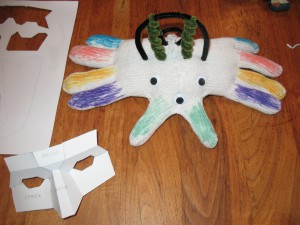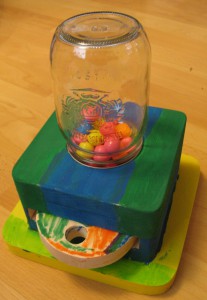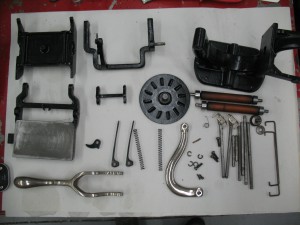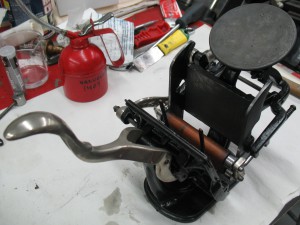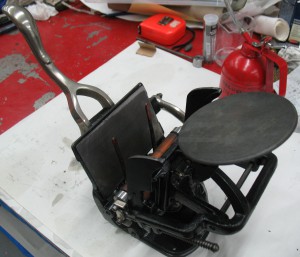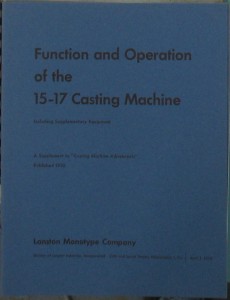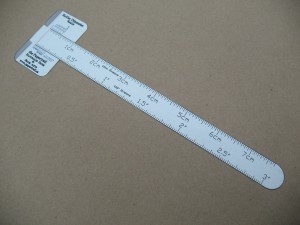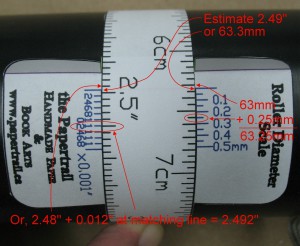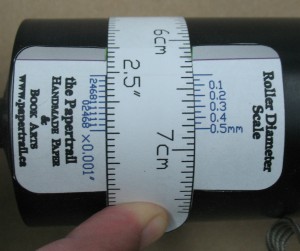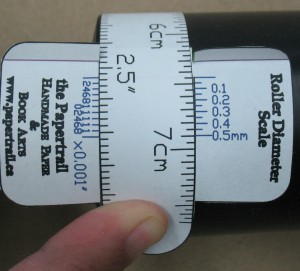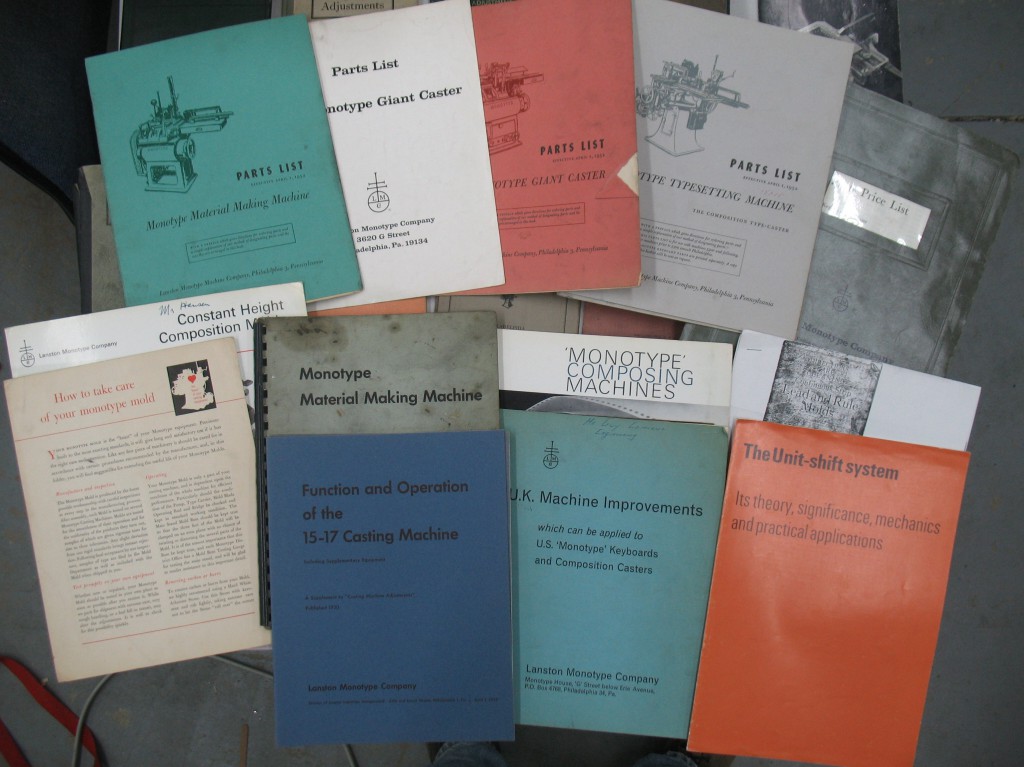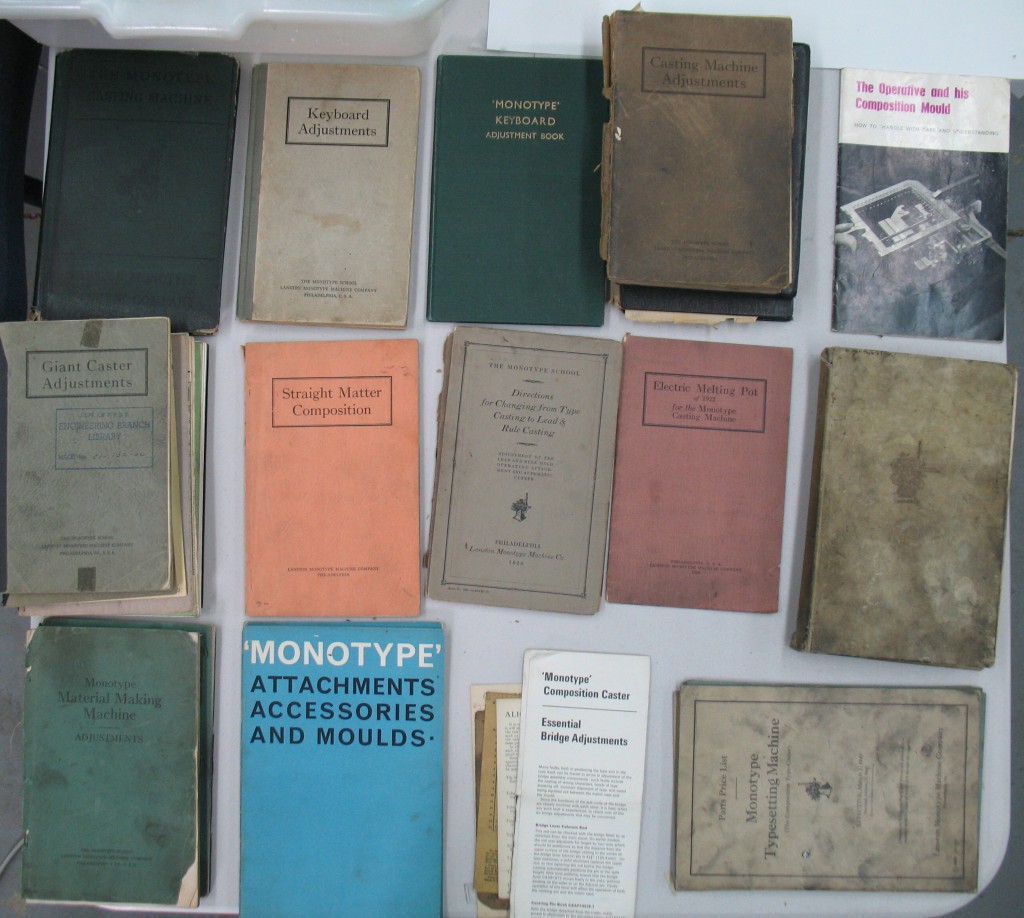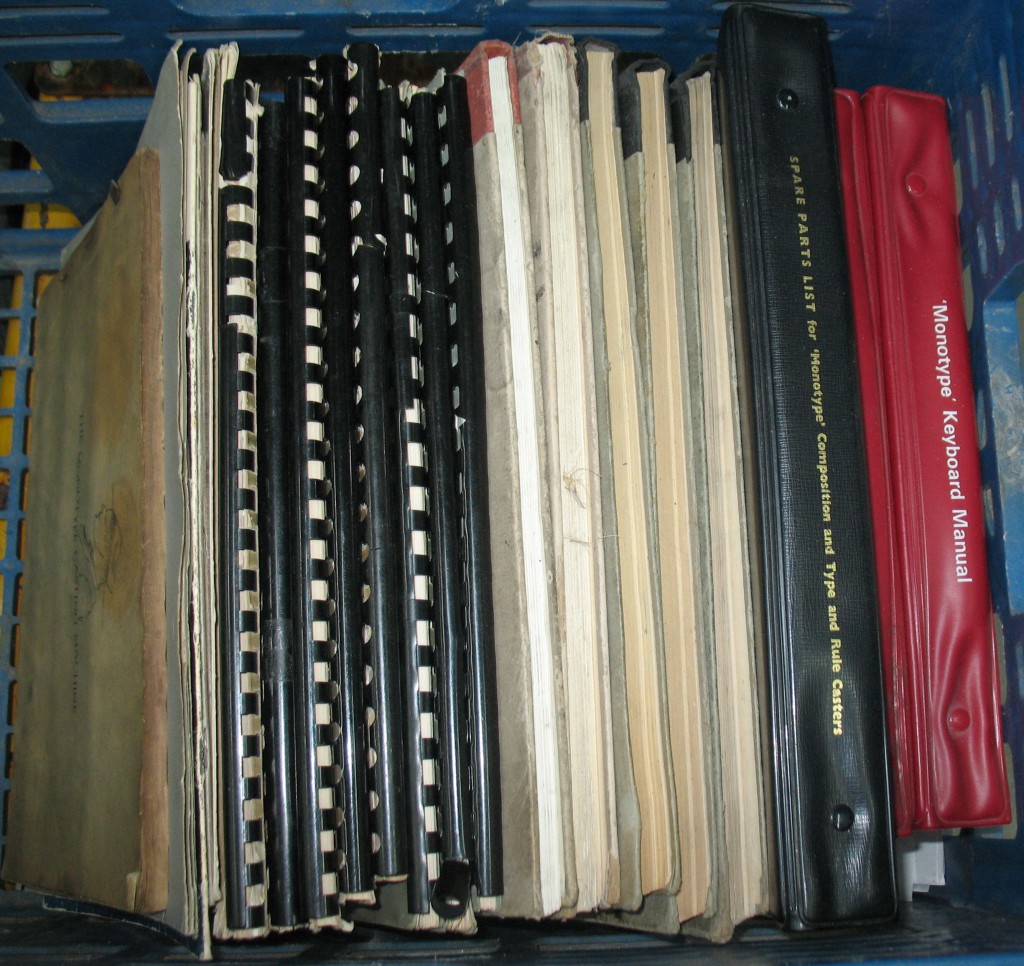I spent last Thursday traveling around the Niagara area and south of Hamilton, doing various book arts things.
My first stop was the Annual General Meeting of the Mackenzie Printery and Newspaper Museum in Queenston. This group has been having some organizational problems for the past few years, but it looks like they may have found their way out of the woods again and the outlook at the meeting seemed positive. There were only about a dozen people there, and all but myself and one other person seemed to be board members, making for a slightly odd atmosphere. One would hope that at a general meeting, the regular members would outnumber the board!
At the end of the meeting several more people arrived for a dedication ceremony. Don Black has donated a couple of pieces of equipment to the museum: a Ludlow cabinet filled with No.11 (Goudy) matrices, and a Pilot tabletop press. These were dedicated to the memory of Donn Purdy and Bill Poole, both of whom were important in keeping letterpress alive as a craft in the area. In addition to Don, Ruth, and Craig Black, there were relatives of Donn and Bill (whose names I have unfortunately forgotten), plus various other letterpress folks from the Toronto and Niagara area including Nicholas Kennedy (Trip Print Press) and Gordon Sisler.
After the ceremony, everyone hung around to chat for a while and look at the collection. I had not been to the museum for about ten years, and I found that there seemed to be a lot more equipment than on my last visit, especially in the basement.
My next stop, after gas for the car and lunch for myself, was Van Huizen Bookbinding in Saint Catharine’s, to replenish our stock of bookcloth. Tony was a bit busy that afternoon so I didn’t have much time to talk, but I bought a few metres of over a dozen colours of bookcloth. We still have to get these unl0aded from the car, organize them onto our own shelves and refresh our sample sheets.
My third stop was to pick up some stereotype mats I found on Kijiji, but the evening before I had forgot to finalize the place and time to meet the seller. All I knew was that it was in the area of Caledonia (southwest of Hamilton) and I probably had some e-mail with the proper location. Unfortunately I had failed to bring along sufficient electronica (as Audrey calls it). I had the (dumb) cell phone and our laptop with its power brick (its battery is dead), but for some reason the GPS wasn’t in the car. Many of the coffee shops and fast food restaurants offer free Wi-Fi, but it turns out that most of them don’t provide any power outlets, making the laptop useless. I tried calling Audrey on the cell phone but there was no answer. So I headed out purely based on my memory of the area, and eventually I stopped for tea at the Tim Hortons in Cayuga and behold! Outlets at some of the tables! I went online for a map and found I was quite close to my destination, and that I had an e-mail from the seller giving directions. It turned out that Cayuga was actually the closest town to his location.
I drove to this guy’s farm, where he had one barn converted to a workshop. Most of it was filled with mothballed machine tools, but it also contained some letterpress equipment for his adult son to use until he can afford some work space in Toronto. While I was there his son was working on cleaning up a Heidelberg Windmill. He showed me around and we chatted for a while, then I went though his stereo mats and picked out some that I found particularly interesting. I didn’t have enough cash, so I drove back to Cayuga in a sudden downpour, found an ATM and back to the farm to pick up and pay for the mats.
In case anyone is interested, he still has a gas-fired stereotype caster for sale. In the shop this came from he says there is also a Miehle flatbed cylinder press, which he estimates to weigh about 4 tons.
On the way home I managed to muddle my way through the rain and dark to Brantford, where I ate dinner. Once I found Highway 24 I was in familiar territory and headed home. Next time I’ll be sure I have the GPS!

